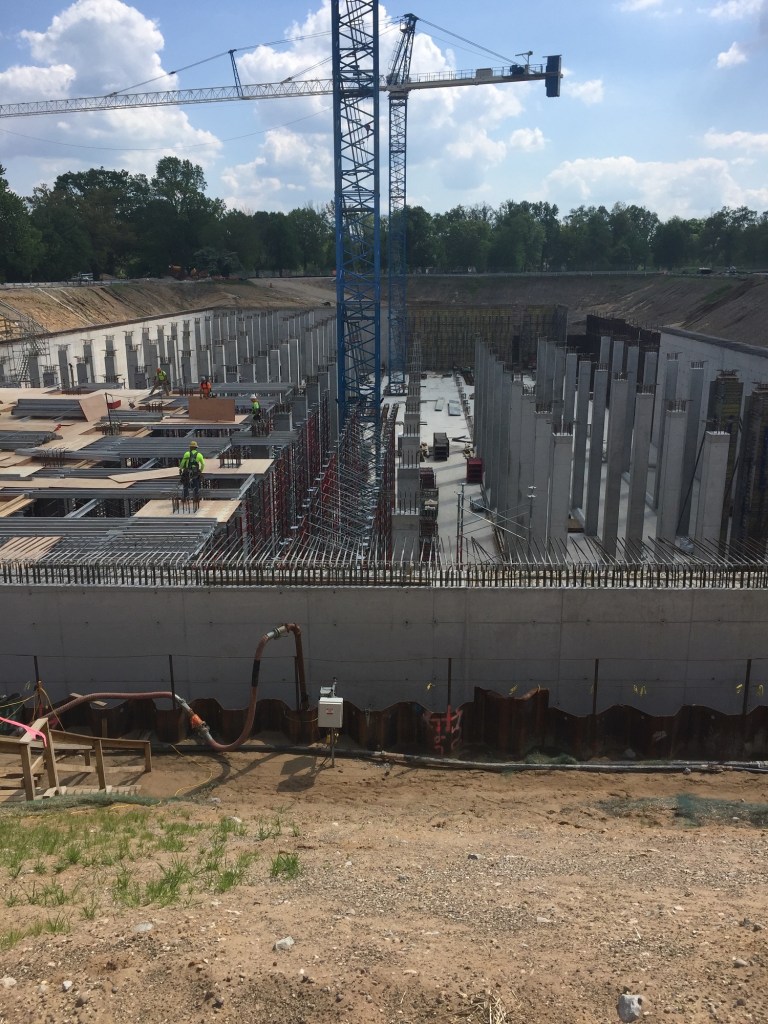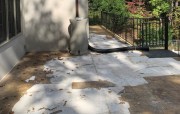The recently-completed $60 million Shawnee Park Basin Project in Louisville, Kentucky is part of a federal mandate to prevent wastewater from entering the Ohio River as combined sewer overflow (CSO). The basin is a watertight concrete structure that captures 20 million gallons of untreated wastewater during storm events. The top of the basin is 12 feet below grade and made from 36-inch-thick reinforced concrete. Wastewater is stored in the basin until a storm subsides, then pumped to the nearest treatment center where it is treated and returned to local streams or to the Ohio River.
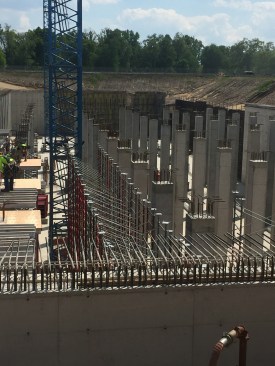
GCP Applied Technologies
The massive size of the underground basin created some complex concrete challenges.
The Challenge
The massive size of the underground basin created some complex concrete challenges for contractor Wilhelm Construction, which built the basin. “The massive underground sewage basin required 30,000-plus cubic yards of concrete,” said Wilhelm Construction project manager Larry Arthur. “When placing that much concrete a lot of things can go wrong,”
Efficiently placing these huge quantities of concrete without any honeycombing or cracking was one of the biggest challenges Wilhelm Construction and the team faced. Each pour took 6 to 8 hours and getting the concrete to flow around congested reinforcing steel and wall ties required an innovative approach.
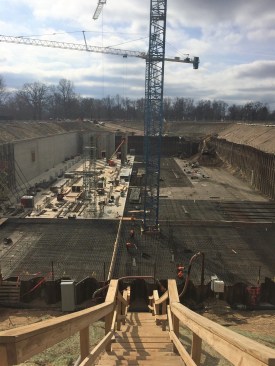
GCP Applied Technologies
Control-flow concrete turned out to be the best solution for concrete for the massive project.
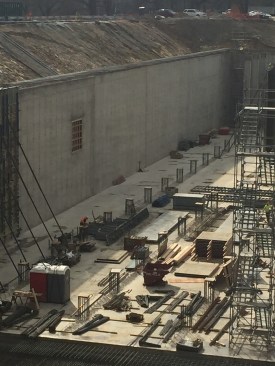
GCP Applied Technologies
Control-flow concrete is made using a conventional mix design, so the material costs were lower than for self-consolidating concrete.
The Solution
Wilhelm and concrete producer Allied Ready Mix Company of Louisville worked together to find an answer. After careful consideration and many tests, they settled on control-flow concrete, as the best solution for the massive concrete project. This highly flowable, segregation-resistant concrete moves more easily than conventional concrete but comes to rest more quickly than self-consolidating concrete. For example, when placed for a graded slab, control-flow concrete will not “run.”
In this project, the control-flow concrete had a slump flow of 22 inches, which is less than most self-consolidating concrete mixes. The concrete was produced using the CONCERA admixture from GCP Applied Technologies. This material flows easily, requiring only minimal energy to move, which allowed trouble-free placement around the steel reinforcement.
Control-flow concrete provided the Shawnee Park Basin project with some unique advantages. More work was accomplished each day since the concrete discharge and placement was significantly faster than with conventional concrete. And, control-flow concrete is made using a conventional mix design, so the material costs were lower than for self-consolidating concrete.
Control-flow concrete provided the best of both worlds to the Shawnee Park Basin Project: Concrete that’s easy to work with, but without high concrete production and quality control costs. “With CONCERA admixtures we were able to use just one chemical and it still worked more efficiently,” said Arthur. “When we saw how the concrete moved and flowed, we knew it was what we needed.”
